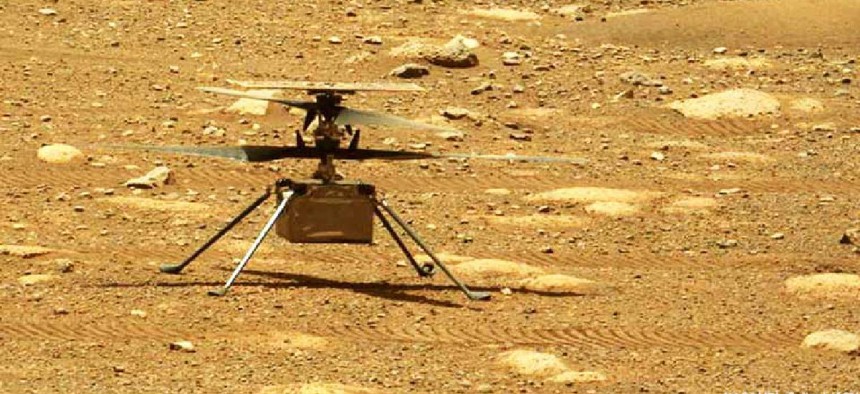NASA runs on data


Connecting state and local government leaders
Data is at core of the space agency’s digital transformation efforts, and key to advancing everything NASA does, the agency’s chief data officer says.
Data is at the heart of everything NASA does, whether it’s pandemic response or landing rovers on Mars, according to Ron Thompson, the space agency’s chief data officer and deputy digital transformation officer.
Speaking at a May 12 session of Pure Storage’s Accelerate Digital conference, Thompson said data is key in today’s increasingly hyper-connected world and is at the core of NASA’s digital transformation efforts.
NASA mission and program leaders have met over the past nine months to establish and build support for enterprisewide capabilities that will advance everything the agency does, he said. One goal of the transformation is to use data to accelerate NASA technologies’ time to market by 25% in the next three to five years.
“This is something that is absolutely quantifiable, it is understandable across all of our domains at NASA, and absolutely we have the buy-in not only from the senior leadership, but from the rank-and-file as well,” Thompson said.
Most recently, data’s usefulness has proved itself in two headline-making events: COVID-19 and the landing of the Perseverance rover on Mars.
Early in the pandemic, NASA leaders, like many public-sector leaders, realized they needed data to make decisions about when to close centers. Thompson and other members of the Federal CDO Council met to determine, for instance, how the government should define COVID cases or the number of beds in a hospital. Then they determined how they would study longitudinal data over time and share data among agencies.
“We made a decision based on data we actually stood up and visualized for our key decision-makers to move our agency out into a virtual space,” Thompson said.
In a mission more specific to NASA, data powered Perseverance’s Feb. 18 landing on Mars. The autonomous robotic vehicle landed on its own using artificial intelligence and continues to learn about the Red Planet through AI. It’s just one example of the possibilities that AI and machine learning hold, Thompson said.
“That area in artificial intelligence and machine learning is one that we’re just scratching the surface on,” he said. “Robotic process automation is another. That’s a more mature area, and we’re very excited about that because we can elevate what our talent is using right now -- manual processes -- and really look at bringing in robotic process automation to automate and eliminate the human out of the routine task and elevate them to more cerebral work that we need to do.”
Another new technology Thompson is excited about is digital twins. In the past, he said, NASA engineers would design empirical models, build them and put them in a wind tunnel. It was a continuous cycle of building, testing and revising. But through an aspect of digital transformation called “model-based everything,” the agency can build and test digital twins before assembling a physical aircraft.
“Before you cut any metal, you have a digital twin in the cloud,” Thompson said. “We can tie in cloud-based offerings and analytics … before we actually make a physical model of a particular aircraft, a wing or an element of an aircraft,” he said. We’re absolutely able to test, validate and verify before [building] anything.”
The biggest challenge to all these changes is not in technology, but culture, Thompson said. To make the most of the technology, NASA must first get employee support for using it.
“I believe there are many advances in technology that we could bring to bear today, but the largest hurdle is doing something differently than we have done in the past,” he said.




